The Battle of the Somme (US title, Kitchener's Great Army in the Battle of the Somme), is a 1916 British documentary and propaganda war film, shot by two official cinematographers, Geoffrey Malins and John McDowell. The film depicts the British Army in the preliminaries and early days of the Battle of the Somme (1 July – 18 November 1916). The film premièred in London on 10 August 1916 and was released generally on 21 August. The film depicts trench warfare, marching infantry, artillery firing on German positions, British troops waiting to attack on 1 July, treatment of wounded British and German soldiers, British and German dead and captured German equipment and positions. A scene during which British troops crouch in a ditch then "go over the top" was staged for the camera behind the lines.
| The Battle of the Somme | |
|---|---|
Yorkshire Evening Post advert for the film, 1916 | |
| Produced by | W. F. Jury |
| Music by | J. Morton Hutcheson (original 1916 medley) Laura Rossi (2006) |
| Cinematography | G. H. Malins J. B. McDowell |
| Edited by | Charles Urban G. H. Malins |
| Distributed by | British Topical Committee for War Films |
Release date |
|
Running time | 74 minutes |
| Country | United Kingdom |
| Language | Silent film English intertitles |
The film was a great success, watched by about 20 million people in Britain in the first six weeks of exhibition and distributed in eighteen other countries. A second film, covering a later phase of the battle, was released in 1917 as The Battle of the Ancre and the Advance of the Tanks. In 1920 the film was preserved in the film archive of the Imperial War Museum. In 2005 it was inscribed on UNESCO's Memory of the World Register and digitally restored, and in 2008, was released on DVD. The Battle of the Somme is significant as an early example of film propaganda, an historical record of the battle and as a popular source of footage illustrating the First World War.
Screenplay
Content
The Battle of the Somme is a black-and-white silent film in five parts, with sequences divided by intertitles summarising the contents. The first part shows preparations for battle behind the British front line; there are sequences of troops marching towards the front, French peasants continuing their farm work in rear areas, the stockpiling of munitions, Major-General Beauvoir De Lisle addresses the 29th Division and some of the preparatory bombardment by 18-pounder, 60-pounder and 4.7-inch guns, 6-inch, 9.2-inch howitzers and 2-inch mortars is shown. The second part depicts more preparations, troops moving into front line trenches, the intensification of the artillery barrage by 12-inch and 15-inch howitzers, a 9.45-inch Heavy Mortar and the detonation of the mine under the Hawthorn Ridge Redoubt. Part three begins with the attack on First day on the Somme (1 July 1916), with some re-enactments and shows the recovery of British wounded and German prisoners. The fourth part shows more scenes of British and German wounded, the clearing of the battlefield and some of the aftermath. The final part shows scenes of devastation, including the ruins of the village of Mametz, British troops at rest and preparations for the next stage of the advance.
Background
On 2 November 1915, the British Topical Committee for War Films, representing British newsreel producers and supported by the War Office, despatched two cameramen to France. Geoffrey Malins of Gaumont British and Edward Tong of Jury's Imperial Pictures, were to shoot footage for short newsreels. By early June Tong had fallen ill and been sent home but he and Malins had made five series of newsreels, which although well-received, had failed to impress the British cinema trade. John McDowell, of the British & Colonial film company, volunteered to replace Tong and left for France on 23 June 1916. On 24 June, the British Army began the preparatory artillery bombardment of German positions for the Battle of the Somme.
Photography
Malins and McDowell shot the film between 26 June and 7–9 July. Malins filmed in the vicinity of Beaumont Hamel, on attachment with the 29th Division (VIII Corps); McDowell worked further south near Fricourt and Mametz with the 7th Division (XV Corps).
Before the battle, Malins worked at the north end of the British Somme sector, photographing troops on the march and heavy artillery west of Gommecourt. De Lisle suggested to Malins that he view the bombardment of Beaumont Hamel from Jacob's Ladder near White City, an abrupt drop down the side of a valley, with about 25 steps cut into the ground, showing up white because of the chalk. Sappers had dug the large mine under Hawthorn Ridge in front of White City near Beaumont Hamel. German shells were falling as Malins made his way to Lanwick Street Trench. Malins had to rise above the parapet to remove sandbags and then set up his camera, which was camouflaged with sackcloth. Malins returned to film the speech by de Lisle to the 2nd Royal Fusiliers, after which Malins heard of the postponement of the battle for 48-hours. Malins returned to White City to film the bombardment of the Hawthorn Ridge Redoubt by trench mortars, during which there were three misfires, which destroyed a trench-mortar position nearby.
On 1 July Malins filmed troops of the 1st Battalion Lancashire Fusiliers waiting to advance at Beaumont Hamel from a sunken lane in no man's land, which had been occupied by digging a 2 ft × 5 ft (0.61 m × 1.52 m) tunnel overnight. Malins then went back to Jacob's ladder to film the explosion of the Hawthorn Ridge mine. At 7:19 a.m. Malins began filming and the mine detonation shook the ground as troops of Royal Engineers advanced on either side to occupy the crater. Later in the day a shell explosion damaged the camera tripod; Malins repaired the tripod and in the evening filmed roll-calls. Next day Malins shot film at La Boisselle before leaving for London around 9 July. Malins returned to France, and from 12–19 July filmed sequences of shellfire and of troops advancing from trenches, which were staged for the camera at a Third Army mortar school near St Pol.
McDowell reached the Somme front after Malins and began filming British preparations on 28 or 29 June, to the east of Albert. He covered the opening day of the battle from the vicinity of Carnoy and from the dressing-station at Minden Post. The success of the 7th Division enabled McDowell to film captured German trenches near Fricourt and Mametz.
Editing
On 10 July, Brigadier-General John Charteris reported to the War Office that some 8,000 feet (2,400 m) of footage had been shot and recommended that sections of film should be released as soon as possible. Footage was first viewed as a negative on 12 July and Charles Urban is thought to have begun work on the film as editor, with the assistance of Malins. Urban later claimed to have proposed that the film be issued as a feature film rather than in short sections. The change in format was agreed with the British Topical Committee for War Films and a 5,000 feet (1,500 m) cut of the film was ready by 19 July. Much footage was censored from the public version, as the War Office wanted the film to contain images that would support the war effort and raise morale. A 77-minute version was ready by 31 July and a rough cut was screened at the British Expeditionary Force (BEF) General Headquarters (GHQ) at Montreuil, Pas-de-Calais and at the Fourth Army headquarters. The commander Lieutenant-General Henry Rawlinson said "some of it is very good but it cut out many of the horrors in dead and wounded". The film was shown to the Secretary of State for War, David Lloyd George on 2 August and members of the cinema trade late on 7 August, the day that the film received final approval for release.
Release
The film comprises five reels and is 77 minutes long. The first screening took place on 10 August 1916 at the Scala Theatre, to an audience of journalists, Foreign Office officials, cinema trade figures and officers of the Imperial General Staff. The screening was preceded by the reading of a letter from Lloyd George, exhorting the audience to "see that this picture, which is in itself an epic of self-sacrifice and gallantry, reaches everyone. Herald the deeds of our brave men to the ends of the earth. This is your duty."
A musical medley with excerpts from classical, folk, contemporary and popular pieces, to be played live in cinemas by accompanying musicians, was devised by J. Morton Hutcheson and published in The Bioscope on 17 August 1916. On 21 August, the film began showing simultaneously in thirty-four London cinemas and opened in provincial cities the following week, when the film was shown simultaneously at twenty cinemas in Birmingham, at least twelve cinemas in Glasgow and Edinburgh, six cinemas in Cardiff and three in Leeds. The Royal Family received a private screening at Windsor Castle on 2 September; the film was eventually shown in more than eighteen countries.
Britain
The popularity of the film was unprecedented and cinemas played the film for longer runs than usual, often to packed houses, while some arranged additional screenings to meet demand. The film is thought to have achieved attendance figures of twenty million in its first six weeks of release. The film also attracted more middle-class audiences, some of whom had never been to a cinema before. Wil
Watch movie The Battle Of The Somme Film online on Amazon
Watch movie The Battle Of The Somme Film online
Watch The Movie On PrimeArmaan Full HD Movie Download
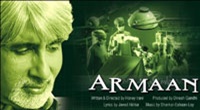
Mungaru Male Full HD Movie Download
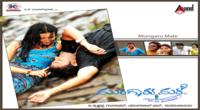
13B Full HD Movie Download

Chandi Sona Full HD Movie Download
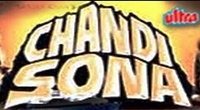
Chhoti Bahu Full HD Movie Download
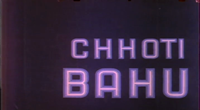
Imaan Full HD Movie Download

Lal Patthar Full HD Movie Download
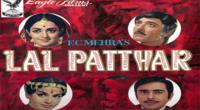
Elaan (1971) Full HD Movie Download
.jpg)
We are Family Full HD Movie Download

Insaaniyat (1955) Full HD Movie Download
.jpg)
Farz Aur Kanoon (1982) Full HD Movie Download
.jpg)
Rakshak: The Protector Full HD Movie Download
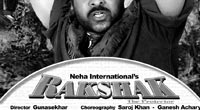
Woh Kaun Thi (1964) Full HD Movie Download
.jpg)
Srimathi Kavali Full HD Movie Download
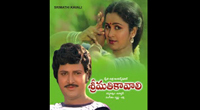
Seeta Ramaiam Gari Manavralu Full HD Movie Download
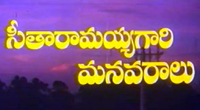
Sravana Sandhya Full HD Movie Download
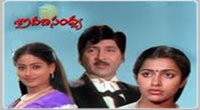
Oceans Thirteen Full HD Movie Download

Dil Full HD Movie Download
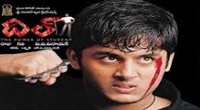
Korukunna Priyudu Full HD Movie Download
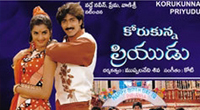
Killar Jhansi Full HD Movie Download
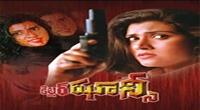
Mastan (Bengali) Full HD Movie Download
.jpg)
Download latest Movie from bollywood
- 1> baaghi 3
- 2> THE SKY IS PINK MOVIE FULL STORY AND REVIEW
- 3> Luka Chuppi
- 4> TO ALL THE BOYS I’VE LOVED BEFORE
- 5> Kabir Singh
- 6> Street Dancer 3D
- 7> Simmba
- 8> Gone Girl
- 9> The Girl Who Lived
- 10> Ludo
- 11> DILWALE DULHANIA LE JAYENGE
- 12> GUILTY
- 13> The Godfather
- 14> Adventures of Rusty
- 15> Sooryavanshi
- 16> Satyameva Jayate 2
- 17> Thappad
- 18> Bhool Bhulaiyaa 2
- 19> KGFChapter 2
- 20> Mardaani 2
- 21> Pinjar
- 22> Shivaji maharaj
- 23> Ek Villian 2
- 24> Hungama 2
- 25> Divergent
- 26> Mumbai Saga
- 27> The Internship
- 28> HIT (telugu)
- 29> Panga
- 30> The perfect date
- 31> 16 December
- 32> Gopala Gopala (Telugu)
- 33> Brahmastra
- 34> Gangubai Kathiawadi
- 35> Manmadhudu
- 36> Nenu local
- 37> Mahanati
- 38> Shatamanam bavathi
- 39> Lagaan
- 40> After
- 41> MOM
- 42> Shamshera
- 43> Raguvaran BTech
- 44> Khakee
- 45> The villain
- 46> OM
- 47> Mr. perfect
- 48> Bueatifull mind
- 49> Hichki
- 50> Gabbar Singh
- 51> Jogi
- 52> Before Sunrise
- 53> Before Sunset
- 54> Before Midnight
- 55> The Big Bull
- 56> Top Gun: Maverick
- 57> The Purge
- 58> The Sky is Pink
- 59> Laxmmi Bomb
- 60> Sadak 2
- 61> Sufna
- 62> Prithviraj
- 63> PK
- 64> Coolie No 1(2020)
- 65> Black Widow
- 66> Dear Zindagi
- 67> Dil Bechara
- 68> PHIR HERA PHERI
- 69> WAR
- 70> Dostana
- 71> RRR: Roudram Ranam Rudhiram
- 72> Maidan
- 73> Dabbang 3
- 74> Chhalaang
- 75> life as we know it
- 76> SherShaah
- 77> Sandeep Aur Pinky Faraar
- 78> Event Horizon
- 79> 83
- 80> Radhe: Your Most Wanted Bhai
- 81> Gunjan Saxena: The Kargil Girl
- 82> Mr India
- 83> Vivah
- 84> Anokha Bandhan
- 85> Ghost
- 86> Bhoot: Part One - The Haunted Ship
- 87> Haseen Dilruba
- 88> Laal Singh Chaddha
- 89> Qismat
- 90> Rajput
- 91> Drive
- 92> Dil Chahta Hai
- 93> Dil Ki Baazi
- 94> Dil Ka Rishta
- 95> Teesri Manzil
- 96> Dil
- 97> Love Aaj Kal
- 98> Khaali Peeli
- 99> Bunty Aur Babli 2
- 100> Atrangi Re
- 101> Gulabo Sitabo
- 102> Jodi
- 103> Suraj Pe Mangal Bhari
- 104> Deewana
- 105> Attack
- 106> Sardar Udham Singh
- 107> Toofan
- 108> THE LOVEBIRDS
- 109> Jersey
- 110> Ginny Weds Sunny
- 111> Thalaivi
- 112> Shiddat
- 113> Angels vs Zombies
- 114> Koi Mil Gya
- 115> Thank God
- 116> Bhuj: The Pride of India
- 117> Hum Aapke Hain Kaun
- 118> The Platform
- 119> Bird Box
- 120> Roohi Afzana
- 121> Torbaaz
- 122> Nikamma
- 123> World War Z
- 124> Extraction
- 125> Train to Busan
- 126> Life of Pi
- 127> SHAADI MEIN JROOR AANA
- 128> Himmat Aur Mehnat
- 129> To All The Boys: P.S. I Still Love You
- 130> Mimi
- 131> Good Newwz
- 132> Shubh Mangal Zyada Saavdhan
- 133> Raabta
- 134> Harry Potter and the Philosopher's Stone
- 135> Harry Potter and the Chamber of Secrets
- 136> Chhapaak
- 137> War of the Worlds
- 138> Harry Potter and the Prisoner of Azkaban
- 139> Harry Potter and the Goblet of Fire
- 140> MURDER MYSTERY
- 141> Shakuntala Devi
- 142> Bachchan Pandey
- 143> Jayeshbhai Jordar
- 144> Sheer Qorma
- 145> Saina
- 146> 'O' Pushpa I hate tears
- 147> Kedarnath
- 148> MS Dhoni The Untold Story
- 149> Chhichhore
- 150> Badhaai Ho
- 151> Unstoppable
- 152> Oz the Great And Powerful
- 153> The Girl on the Train
- 154> Haathi Mere Saathi 2020
- 155> The Conjuring: The Devil Made Me Do It
- 156> Gandhi Se Pehle Gandhi
- 157> The Song of Scorpions
- 158> Srimanthudu
- 159> Hello Guru Prema Kosame
- 160> Beauty and The Beast
- 161> Black Panther
- 162> Charlie and the Chocolate Factory
- 163> Bole Chudiyan
- 164> Fidaa
- 165> Duvvada Jagannadham
- 166> Bruce Lee: The Fighter
- 167> Hyper
- 168> Yaara
- 169> Red (2020)
- 170> Shivam
- 171> That Is Mahalakshmi
- 172> Nishabdham
- 173> Aashram 2020 web series
- 174> Laxmii
- 175> Mismatched
- 176> STUDENT OF THE YEAR 2
- 177> NAIL POLISH
- 178> Ramprasad Ki Tehrvi
- 179> KAAGAZ
- 180> 12 o Clock
- 181> The Power
- 182> bolo hau
- 183> Tribhanga
- 184> JAMUN
- 185> Madam Chief Minister
- 186> Maasaab
- 187> Aadhaar
- 188> Tanhaji
- 189> Bhaagi 3
- 190> Bhootnath
- 191> MALANG
- 192> Jai Mummy Di
- 193> Haathi Mere Saathi 2021
- 194> Shakeela
- 195> Unpaused
- 196> Annayya
- 197> Vamsoddharakudu
- 198> Mrugaraju
- 199> Narasimha Naidu
- 200> Sankranti
- 201> Manasu Maata Vinadhu
- 202> Anjaane
- 203> Apaharan
- 204> Bachke Rehna Re Baba
- 205> Bewafaa
- 206> Roohi
- 207> Radhe
- 208> Zindagi Khoobsoorat Hai
- 209> Yeh Mohabbat Hai
- 210> Yeh Kya Ho Raha Hai?
- 211> The Tomorrow War
- 212> DehradunDiary
- 213> Meri Shaadi Karaoo
- 214> Matruu Ki Bijlee Ka Mandola
- 215> No One Killed Jesica
- 216> Aag Ka Goola
- 217> Eight Million Dollars
- 218> Three Hundred
- 219> Cats and Dog
- 220> Decoy
- 221> Gold Rush
- 222> You Have Got Mail
- 223> Final Destination three
- 224> Tofan
- 225> Jungle
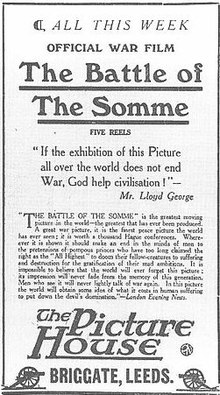 Story of movie The Battle Of The Somme Film :
Story of movie The Battle Of The Somme Film : 